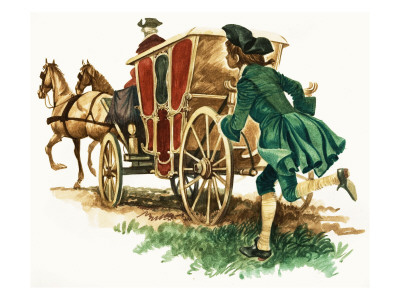Bestiaries present known and fanciful animals: Horse and Rider; ca. 1506-1508 beeswax sculpture by Leonardo da Vinci
Renaissance polymath Leonardo da Vinci (April 15, 1452–May 2, 1519) left captivating studies of horses along with his only surviving equine sculpture.
sculpture authenticated in 1985 by da Vinci expert Carlo Pedretti (born 1928): Jwpetty1951, CC BY SA 4.0, via Wikimedia Commons @ https://commons.wikimedia.org/wiki/File:Leonardo_Da_Vinci_Horse_and_Rider.jpg
The Chandos Portrait of Georg Friedrich Händel: ca. 1720 oil on canvas
Portrait, formerly attributed to Sir James Thornhill (July 25, 1675 or 1676–May 4, 1734), is known as Chandos portrait for the musician's great patron, James Brydges, 1st Duke of Chandos (January 6, 1673 - August 9, 1744)
The Fitzwilliam Museum, University of Cambridge, Cambridgeshire, South East England: Public Domain, via Wikimedia Commons @ https://commons.wikimedia.org/wiki/File:Georg_Friedrich_Händel_3.jpg
Turtledoves (Streptopelia spp) symbolize safety in Georg Friedrich Händel opera, Floridante.
Floridante premiered at King's Theatre in London on December 9, 1721.
The Turtle Dove; oil on canvas by Sophie Gengembre Anderson (1823 - March 10, 1903): Public Domain, via Wikimedia Commons @ https://commons.wikimedia.org/wiki/File:SophieAnderson_TheTurtleDoveSmall.jpg
Donna Leon's debut installment of her series on Baroque music's contemporaneous creations and inventions honors her favorite composer, Georg Friedrich Händel.
Donna Leon; Monday, November 1, 2010, 12:19: Michiel Hendryckx, CC BY SA 3.0, via Wikimedia Commons @ https://commons.wikimedia.org/wiki/File:Donna_Leon.jpg
Georg Friedrich Händel preceded his insertion of a nightingale in his 1741 opera Deidamia with compositions ca. 1739 duetting a nightingale with a cuckoo (Concerti Grossi Op. 6 No. 9; Organ Concerto No. 13).
singing contest between cuckoo (cuculus) and nightingale (luscinia) judged by donkey (assus) in woodcut by Tobias Stimmer (April 7, 1539-Jan. 4, 1584), whose woodcuts Peter Paul Rubens (June 28,1577-May 30, 1640) described as "a special jewel of our art"
Matthias Holtzwart's Emblematum Tyrocinia (Strasbourg: Bernhard Jobin, 1581): Provenance Online Project (POP), CC BY 2.0, via Flickr @ https://www.flickr.com/photos/58558794@N07/7725720458/













 Are Hawaiian Huakai Po Nightmarchers Avenging Halloween Thursday?on 10/02/2024
Are Hawaiian Huakai Po Nightmarchers Avenging Halloween Thursday?on 10/02/2024
 Mailing Addresses for 2023 Form 4868 Extending 1040 and 1040SR April 15, 2024, Due Dateon 04/15/2024
Mailing Addresses for 2023 Form 4868 Extending 1040 and 1040SR April 15, 2024, Due Dateon 04/15/2024
 Mailing Addresses for 2023 Forms 1040 and 1040SR Filed in 2024on 04/15/2024
Mailing Addresses for 2023 Forms 1040 and 1040SR Filed in 2024on 04/15/2024
 Mailing Addresses for 2022 Form 4868 Extending 1040 and 1040SR April 18, 2023, Due Dateon 04/13/2023
Mailing Addresses for 2022 Form 4868 Extending 1040 and 1040SR April 18, 2023, Due Dateon 04/13/2023



Comments
Any display of Handelian life and works benefits from his bestiary as artistic mosaics, paintings or sculptures and as props such as ceramic or glass or plastic figurines, lego, plush animals or tinker-toy.
The 12 "beasts" and their symbolism cooperate with wide-ranging displays relating to:
bee, as cleverness in Berenice, Regina d’Egitto;
elephant, as challenges in Judas Maccabaeus;
frogs, as crises in Israel in Egypt;
lion, as bravery in Arianna in Creta;
moth, as temptation in Partenope;
nightingale, as elusiveness in Deidamia;
phoenix, as rebirth in Admeto, Re di Tessaglia;
silver dove, as ascents in Theodora;
snake, as poison in Giulio Cesare in Egitto;
stag, as nobility in Ottone, Re di Germania;
tiger, as altruism in Alcina; and
turtledove, as safety in Floridante.
The above 12 can contribute to educating and entertaining us artistically, culturally, environmentally, historically, musically, scientifically, socially, spiritually, traditionally and symbolically, can't they?
The first subheading, Bestiaries become best-sellers regardless of place or time, considers as recent the 20th-century bestiary by Argentine author Jorge Luis Borges.
Is there any beloved or best bestiary from the 21st century?
Considering the first in-text image of the Da Vinci equestrian statue concerns me with animal sentients contained and not contained within the Handel bestiary.
Why does Donna Leon designate no Handel music-derived horse sentient?
The computer crashed before I continued my cherishing animal-sentient correlations with certain characteristics.
Lions as brave, stags as noble and tigers as altruistic draw me.
Moths as tempting and silver turtledoves as elusive intrigue me.
A silver-illuminating turtledove is elusive even as is a moth indeed tempting?
Might the temptation be in the moving around darkened ambiances?
The bestiary tradition intrigues me, especially in how it interprets certain animal sentients as incarnating certain important influences, such as the phoenix as rebirth.
It nevertheless somewhat surprises me the sequencing frogs with crises.
Anyone whom spring peepers (Pseudacris crucifer) treat to their spring-mate-ability sings thinks of such frogs as spring-abundance predictors.
Toads perhaps worry some people with their rougher skins.
So why would crises be worked into frogs, not toads, wending our way?
My interests in the biogeographical Italy sometimes focus more on the northern, upper part
My genealogical interests, for example, focus most on the Pisa and the Trieste areas even as the entire north from west to east, east to west find favor arboriculturally, biogeographically, culturally, historically, silviculturally, visually.
Florence and Rome merit brief and extended visits even as just about any central, eastern, northern, southern, western city, town, village.
Which one is my favorite? Siena, in the Firenze area!
I have been to Italy only once, a long time ago. It's unbelievable how time flies. I do hope to make it to Rome and Florence in this lifetime :)
Yes, me too, I like the idea of looking for animals (and plants) mentioned in music, of which probably one of the best known examples of fauna set to music notes is "The Magic Flute."
Since I know Italian and Italy, I tend to make efforts to keep up-to-date on the culture.
This is a nice idea, to scour Handel's works in search of animals :) How do you find these intriguing books? Were you familiar with the author?